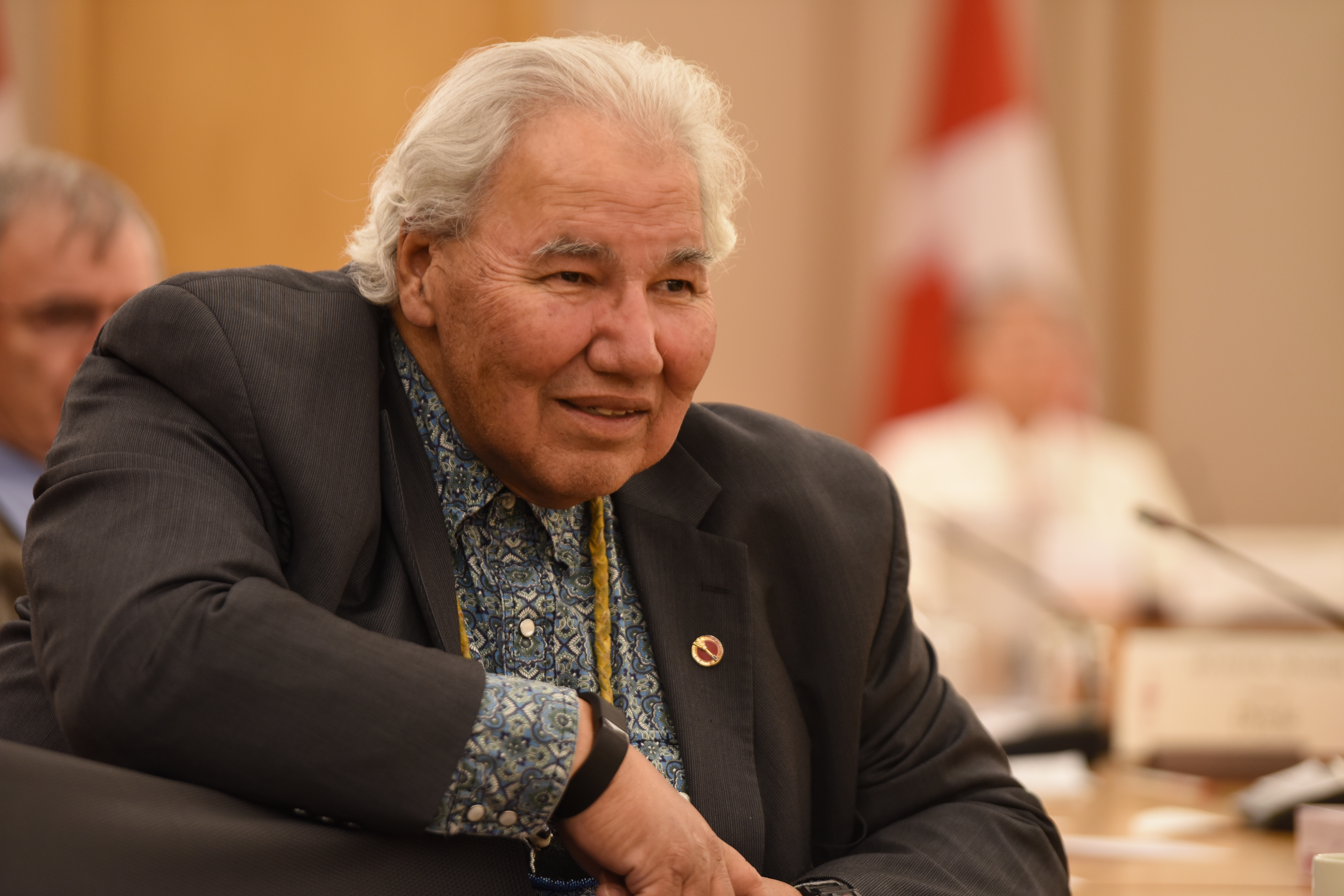
How climate change will shape the future of environmental professions – for better and for worse
October 7, 2019
10 Questions with Senator Murray Sinclair
October 7, 2019Changing practices and consumer preferences are expected to have a disruptive effect on employment
Laxmi Prasad Pant

Translating these commitments into economic prosperity and decent jobs within food and agriculture is a challenging process. The Intergovernmental Panel on Climate Change (IPCC) recently released a Special Report on Climate Change and Land, to which this author has also contributed, with a new estimate that livestock, crop, fertilizer and fossil fuel use in agriculture account for about 21-37% of global GHG emissions (IPCC, 2019).
In Canada, the food and agriculture sector produces over 10% of greenhouse gas (GHG) emissions and is responsible for one in eight jobs, employing over 2.3 million people (Agriculture and Agri-Food Canada, 2016, 2019). This sector is also the largest employer in the world, and it will grow further to feed the 10 billion people expected to inhabit the planet by 2050 (United Nations, 2017). This growth will have to be low-carbon in order to meet GHG emission-reduction targets.
Climate change exacerbates labour market challenges
The effects of climate change on food and agricultural jobs should be considered within the context of the already deteriorating labour market. Canadian rural communities are on the decline, and the food and agriculture sector has already faced labour market shortages. The most notable changes are youth out-migration, aging population, population decline and closing down of social services.
According to the 2016 Census of Agriculture (Statistics Canada, 2017), the number of farms has been decreasing in Canada; the family farm is declining at a faster rate. Canada has the second-lowest proportion of family farmers after New Zealand (Graeub et al., 2016).
“Canadian rural communities are on the decline, and the food and agriculture sector has already faced labour market shortages.”
The Conference Board of Canada, in its 2016 report, estimated that labour shortages within the agriculture sector have doubled over the past decade (Meyer-Robinson & Burt, 2016). Shortages are expected to increase two-fold again in the next 10 years, reaching 113,800 people. In a positive framing of the labour shortages, Ontario Agricultural College’s Planning for Tomorrow 2.0 report estimates that four jobs are available for each graduate in food and agriculture (Synthesis Agri-Food Network, 2017).
Quality of the available jobs is equally important regarding social stigma, occupational health and workplace safety. Food and agricultural careers in Ontario’s Perth County suffer from social stigma, particularly those jobs that do not necessarily require post-secondary education (DEEP Centre, 2015).
According to a recent International Labour Organization report (Montt et al., 2018), climate change affects the quality of jobs that rely on ecosystem services, including employment in agriculture, fisheries, forestry and tourism. The risks and hazards associated with climate change affect vulnerable farm workers the most, including women, migrant workers, people in poverty, Indigenous people and persons with disabilities.

A transition to agroecological farming would help develop agricultural systems that are low-carbon, climate-resistant and less wasteful. (iStock)
Climate change not always bad for the local economy and jobs
Climate change may also have some positive implications for agricultural workers. In temperate countries like Canada, global warming can open up more areas for farming (Cui, Hao David et al., 2018). For instance, the West Kootenay region in British Columbia will experience a longer growing season, hotter summers and more frost-free days (Roussin et al., 2015). This should increase the region’s capacity to grow food. However, scorching summers can cause drought, which might require additional water for irrigation, food processing and municipal use.
Career planners in food and agriculture should recognize that agriculture is both a source of GHGs as well as a sink where crops and soils can capture and store carbon. One way to make food and agricultural systems low-carbon and climate-resilient is to promote agroecology, which is using science, practice and social movements to bring incremental and transformational changes in industrial agriculture (Gliessman, 2018). For instance, such changes include minimum or zero tillage that has increased carbon capture and storage in soils, most notably in canola, soybean, field pea and wheat in the Canadian Prairies.
While incremental changes are compatible with the incumbent practices, transformational changes can be essentially disruptive. The largest share of GHG in Canadian agriculture comes from livestock (5%) followed by crops (3%) and fossil fuel use (2%). Hence, Canada’s Food Guide recommends eating more plant-based protein sources, which has been applauded as a step forward to reduce our carbon footprint (Health Canada, 2019). A recent IPCC report (2019) also recommends eating less meat, which requires transformational changes in our habits and practices. This transition could disrupt the incumbent labour market, particularly for those working in the carbon-intensive beef cattle, dairy cattle and eggs industries.
The Food Policy for Canada aims to address these challenges by supporting agricultural systems that are low-carbon, climate-resilient, less wasteful, and supportive of the local economies and jobs (Agriculture and Agri-Food Canada, 2019). A transition to agroecological farming would help fulfill this mandate. This would eliminate carbon-intensive jobs in the industrial farming sector while creating carbon-friendly jobs that require a new set of skills, such as intercropping, crop rotation, cover crops, integrating trees and small animals back into farming. Agroecological farming could also improve occupational health and safety and provide opportunity to learn new skills, experience self-fulfillment and exercise human ingenuity (Timmermann & Félix, 2015).
In agroecological systems, incumbent workers and aspiring jobseekers will have to unlearn old skills and learn new skills, such as how to control weeds, insect pests and diseases without using harmful chemicals. We are heading to the Fourth Industrial Revolution, and advanced technologies – physical, digital and biological technologies – are prominent in food and agriculture as well (Pant, 2019). These technologies can reduce the food and agriculture sector’s carbon footprint through input use efficiency, but policymakers should also recognize anxieties, including unprecedented job losses to automation and robotics (Rotz et al., 2019).
A call for action
How climate change, and subsequent mitigation and adaptation, will affect local economies and employment in food and agriculture is poorly understood. This ambiguity is only expected to grow in the future. For instance, the declaration of a climate emergency could lead to resource mobilization; it could also create a sense of insecurity and fear among children, vulnerable workers, family farmers and aspiring jobseekers. Career counsellors, educators, leaders and policymakers should consider this reality while preparing the next generation of the workforce in this sector.
We need to make the food and agriculture profession more respected in a changing climate, regardless of whether or not a job requires post-secondary education. Advancements in physical, digital and biological technologies can make us climate-smart while advancing the profile of the industry. However, lack of access to advanced technologies as a result of the digital divide across social classes and geographic regions can create inequalities among already vulnerable agricultural workers (Rotz et al., 2019; Pant & Hambly-Odame, 2017). Career counsellors should be aware that new opportunities from technological advancements come with challenges to train younger farmers and aspiring jobseekers in advanced and highly technical skills as well as social and interpersonal skills.
Dr Laxmi Prasad Pant is an Adjunct Professor and Associated Graduate Faculty at the University of Guelph. He conducts research on regional and rural innovation, agroecology, citizen science, sustainability transitions, ethics of new and emerging technologies, pedagogy and the practice of teaching controversial topics. His research has appeared in Agriculture and Human Values, Journal of Rural Studies, Technological Forecasting and Social Change, Current Opinion in Environmental Sustainability, Regional Environmental Change, Agroecology and Sustainable Food Systems, and The Conversation, among other publications.
References
Agriculture and Agri-Food Canada (2016). An Overview of the Canadian Agriculture and Agri-Food System 2016. Retrieved from agr.gc.ca/eng/about-us/publications/economic-publications/an-overview-of-the-canadian-agriculture-and-agri-food-system-2016/?id=1462288050282
Agriculture and Agri-Food Canada (2019, June 17). Food Policy for Canada. Retrieved from canada.ca/en/agriculture-agri-food/news/2019/06/everyone-at-the-table-government-of-canada-announces-the-first-ever-food-policy-for-canada.html
Cui, Hao David et al. (2018). Climate change and global market integration: Implications for global economic activities, agricultural commodities and food security. Food and Agriculture Organization of the United Nations. Retrieved from fao.org/3/CA2332EN/ca2332en.pdf.
DEEP Centre (2015). Opportunity 2020: Transforming the Labour Market in Perth County, Stratford and St. Marys. Retrieved from perthcounty.ca/en/doing-business/resources/files/LM_2020Report_Final.pdf
Gliessman, S. (2018). Defining Agroecology. Agroecology and Sustainable Food Systems, 42(6), 599-600.
Graeub et al. (2016). The State of Family Farms in the World. World Development, 87, 1–15.
Health Canada (2019). Canada’s Food Guide. Retrieved from food-guide.canada.ca/static/assets/pdf/CFG-snapshot-EN.pdf
IPCC (2019). Climate Change and Land. Retrieved from ipcc.ch/srccl-report-download-page/
Meyer-Robinson, R., & Burt, M. (2016). Sowing the Seeds of Growth. Temporary Foreign Workers in Agriculture. The Conference Board of Canada. Retrieved from conferenceboard.ca/e-library/abstract.aspx?did=8363
Montt, G., Fraga, F. and Harsdorff, M. (2018). The future of work in a changing natural environment: Climate change, degradation and sustainability. International Labour Organization. Retrieved from ilo.org/global/topics/future-of-work/publications/research-papers/WCMS_644145/lang–en/index.htm
Pant, L. (2019, May 2). Addressing food insecurity in the digital age. The Conversation. Retrieved from theconversation.com/addressing-food-insecurity-in-the-digital-age-112501
Pant, L. P., & Hambly-Odame, H. (2017). Broadband for a sustainable digital future of rural communities: A reflexive interactive assessment. Journal of Rural Studies, 54, 435-450.
Rotz, S., et al. (2019). Automated pastures and the digital divide: How agricultural technologies are shaping labour and rural communities. Journal of Rural Studies, 68, 112-122.
Roussin, R., Wilson, J. E., Utzig, G. & Lavkulich, L. M. (2015). Assessing the potential for pocket agriculture in mountainous regions: A case study in West Kootenay, British Columbia, Canada. Journal of Agriculture, Food Systems, and Community Development, 6(1), 175-188.
Statistics Canada (2017). 2016 Census of Agriculture. Retrieved from statcan.gc.ca/daily-quotidien/170510/dq170510a-eng.htm
Synthesis Agri-Food Network (2017). Planning for Tomorrow 2.0. Ontario Agricultural College. Retrieved from uoguelph.ca/oac/about/planning-tomorrow-20-report
Timmermann, C., & Félix, G. F. (2015). Agroecology as a vehicle for contributive justice. Agriculture and Human Values, 32, 523-538.
United Nations (2017, June 21). World population projected to reach 9.8 billion in 2050, and 11.2 billion in 2100. Retrieved from un.org/development/desa/en/news/population/world-population-prospects-2017.html

